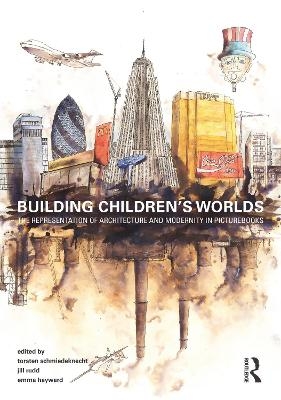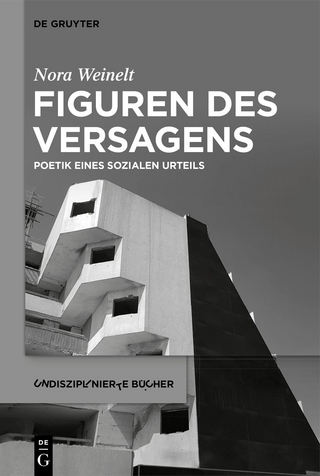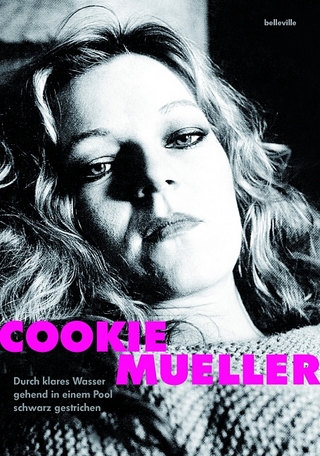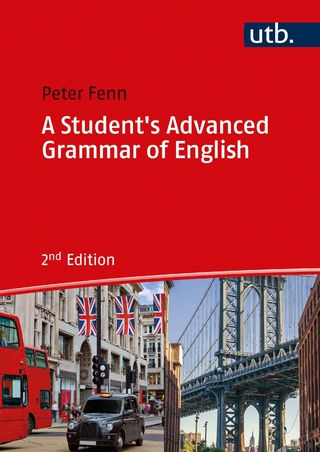
Building Children’s Worlds
Routledge (Verlag)
978-0-367-67547-9 (ISBN)
- Titel z.Zt. nicht lieferbar
- Versandkostenfrei innerhalb Deutschlands
- Auch auf Rechnung
- Verfügbarkeit in der Filiale vor Ort prüfen
- Artikel merken
This book reveals what stories are told about modern architecture and shows how those stories affect future attitudes towards and expectations of the built environment.
Children are the future architects, clients and users of our buildings. The kinds of architectural worlds they are exposed to in picturebooks during their formative years may be assumed to influence how they regard such architecture as adults.
Contemporary urban environments the world over represent the various stages of modernism in architecture. This book reads that history through picturebooks and considers the kinds of national identities and histories they construct.
Twelve specialist essays from international scholars address questions such as: Is modern architecture used to construct specific narratives of childhood? Is it taken to support ‘negative’ narratives of alienation on the one hand and ‘positive’ narratives of happiness on the other? Do images of modern architecture support ideas of ‘community’? Reinforce ‘family values’? If so, what kinds of architecture, community and family? How is modern architecture placed vis-à-vis the promotion of diversity (ethnic, religious, gender etc.)? How might the use of architecture in comic strips or the presence of specific kinds of building in fiction aimed at younger adults be related to the groundwork laid in picturebooks for younger readers?
This book reveals what stories are told about modern architecture and shows how those stories affect future attitudes towards and expectations of the built environment.
Torsten Schmiedeknecht is a Reader in Architecture at the University of Liverpool. His research interests include the representation of architecture in print media, rationalism in architecture and architectural competitions. He is the co-editor of Modernism and the Professional Architecture Journal, The Rationalist Reader, Rationalist Traces, An Architect’s Guide to Fame and Fame and Architecture. In 2016 he was the recipient of an RIBA Research Trust Award for his project The representation of Modern Architecture through illustrations in postwar British Children’s Literature, which resulted in a co-authored paper (‘Absent Architectures: Post-War Housing in British Children’s Picture Books’) with Emma Hayward, and the exhibition Building Children’s Worlds at RIBA North in Liverpool in Spring 2019. Jill Rudd is a Professor of Literature in the English Department at the University of Liverpool, where, amongst other things, she teaches medieval literature and children’s literature. Chiefly a medievalist with an interest in eco-criticism, her publications include Greenery: Ecocritical Readings of Late Medieval English Literature (MUP, 2007) and various articles and chapters on mice, clouds, flowers and plants. She has also written on Sir Gawain and the Green Knight and The Secret Garden and in the past, on Charlotte Perkins Gilman’s short stories. She has supervised postgraduate theses on issue-led children’s literature written for older children readers and young adults. Emma Hayward is a secondary school English teacher and Honorary Research Fellow at the University of Liverpool. Her research interests include curriculum design and 20th- and 21st-century literature – in particular, the relationship between literature and the built environment, verbal-visual narratives and postmodernism/late postmodernism. She has published on children’s literature and the built environment. Her publications include ‘Absent Architectures: Post-War Housing in British Children’s Picture Books, 1960-present’ and ‘"Horrible muddy English places": Downriver, Swandown, and the Mock-Heroic Tradition’.
Introduction Part 1: Modernity 1.Building for the future - Children as future citizens in Swedish Picturebooks of the 1930s 2. A Modern Utopia: Architecture, Modernity and Ladybird Books in postwar Britain 3. Reading as Building: Modernist Architecture and Book Space in Picturebooks 4. Representations of modern architecture and urbanism in Colombian children's literature from the mid-20th century Part 2: Domestic Space 5. Domestic Architecture and Environmental Design in Australian Picture Books 6. The house, where everything begins 7. Architecture and Interior Design in Italian Picturebooks: A case study of Bruno Munari 8. Representations of architecture in children’s picture books in Australia, Singapore and China 9. Building Diversity in British and American Children’s Picturebooks (2000-present) Part 3: Urban Space 10. Highly Modern Ideal Homestead 11. Architecture and Magic: Mapping the London of Children’s Fantasy Fiction 12. Ordinary cityscapes and architecture in Jörg Müller’s picturebook oeuvre
| Erscheinungsdatum | 10.03.2023 |
|---|---|
| Zusatzinfo | 3 Tables, color; 1 Line drawings, color; 80 Halftones, color; 81 Illustrations, color |
| Verlagsort | London |
| Sprache | englisch |
| Maße | 174 x 246 mm |
| Gewicht | 820 g |
| Themenwelt | Geisteswissenschaften ► Geschichte |
| Geisteswissenschaften ► Sprach- / Literaturwissenschaft ► Anglistik / Amerikanistik | |
| Geisteswissenschaften ► Sprach- / Literaturwissenschaft ► Literaturwissenschaft | |
| Naturwissenschaften ► Biologie ► Ökologie / Naturschutz | |
| Naturwissenschaften ► Geowissenschaften ► Geografie / Kartografie | |
| Technik ► Architektur | |
| ISBN-10 | 0-367-67547-1 / 0367675471 |
| ISBN-13 | 978-0-367-67547-9 / 9780367675479 |
| Zustand | Neuware |
| Informationen gemäß Produktsicherheitsverordnung (GPSR) | |
| Haben Sie eine Frage zum Produkt? |
aus dem Bereich


